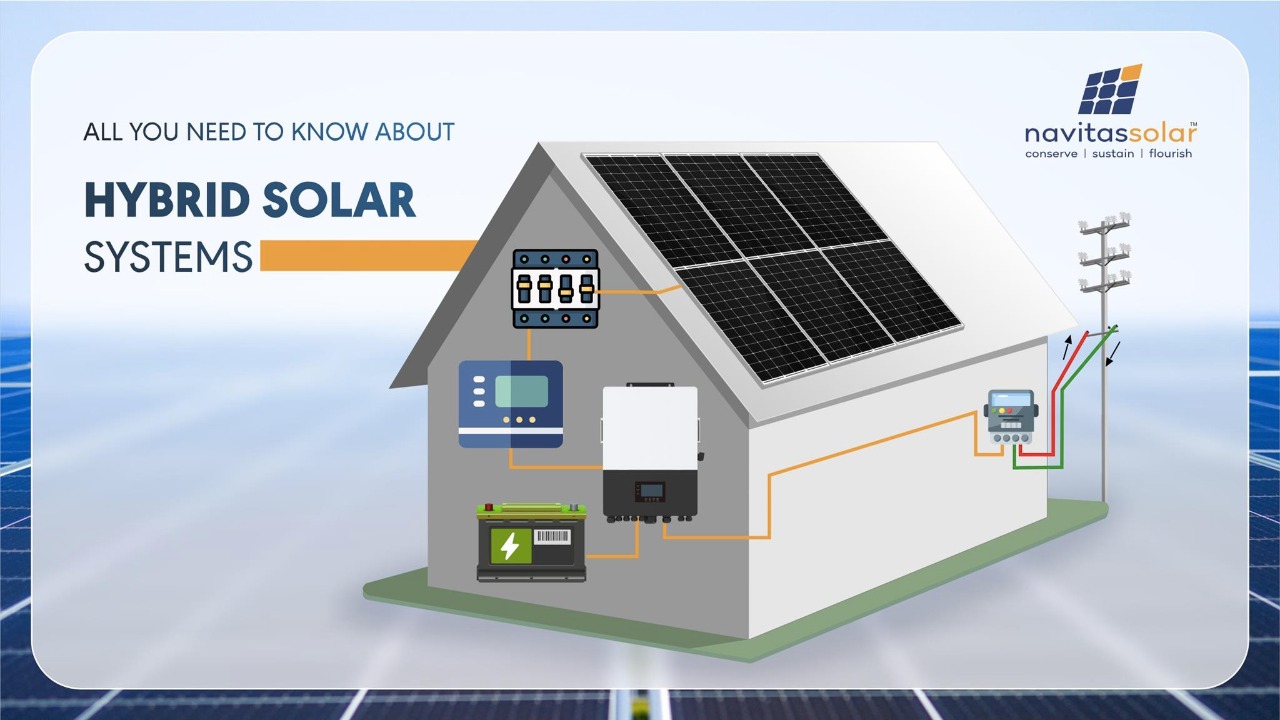September 13, 2022
Hybrid Solar Solution
As people frequently opt for either an on-grid solar system or an off-grid solar system when picking a solar system for their home, institution, business, or industry. However, there is now a third option on the market, known as a “Hybrid Solar System.” This system combines an off-grid solar system with a grid-connected solar system. It can feed excess electricity into the main grid and has a battery backup for power storage. Because a hybrid solar system operates day and night, your home will always have electricity. The hybrid system combines grid connectivity with solar energy storage. This solution offers the freedom to store the electricity your solar system produced throughout the day in batteries as opposed to feeding it back into the power grid. Instead of paying more to utilize the government grid at night or in the evening, the same energy can be used. Your batteries will be fully charged if the system is producing more energy than is being used, and solar net metering will feed the excess to the local power grid. The government or Power Company will alter the exported units on your electricity account at the time of billing. We at Navitas Solar, India’s leading module manufacturer endeavor to bring innovative and functional products to the customers. We desire to develop a nation that has sustainable and renewable energy sources and curb the dependency on non-renewable resources of energy. With the changing technology, the innovations in solar manufacturing and energy solutions also modify. How Hybrid Solar System Works? In a hybrid solar system, the array of solar panels is linked to the solar inverter, which is then connected to the solar battery and utility grid. Sunlight is absorbed by the solar panel, which then uses it to generate direct current electricity. The linked solar inverter uses this electricity to further convert direct current (DC) power to alternating current (AC). The electrical current that powers our luxury items and common appliances are known as alternating current. During the DayTime: If your home’s overall power requirement is less than what the solar system can produce throughout the day, the excess energy is then automatically exported to the utility grid via “Net-Metering” once the solar batteries have been fully charged. During the Night: The power consumption at night is based on the priority you have set. If your primary energy source is the battery, in that case, the first energy stored in the battery will be consumed, up to 50%. Once the 50% power is consumed from the battery, the load will be shifted to the main grid. In case your primary energy source is the main grid, then, in that case, the battery will act as a power backup in case of any power cut. Advantages of Hybrid System
- Gives you the option to store extra solar or inexpensive (off-peak) electricity.
- Allows for the use of solar energy saved during the busiest night-time hours.
- Reduces power consumption from the grid.
- Enables advanced energy management.


Related Posts
You May Also Like
A Step-by-Step Guide to Solar…
Read MoreEmpowering the Leaders of Tomorrow:…
Read MoreThe Future of Energy is…
Read MoreNavitas Solar Powers Up for…
Read MoreRCB Goes Green: How Navitas…
Read MoreThe Green Revolution in Cricket:…
Read More